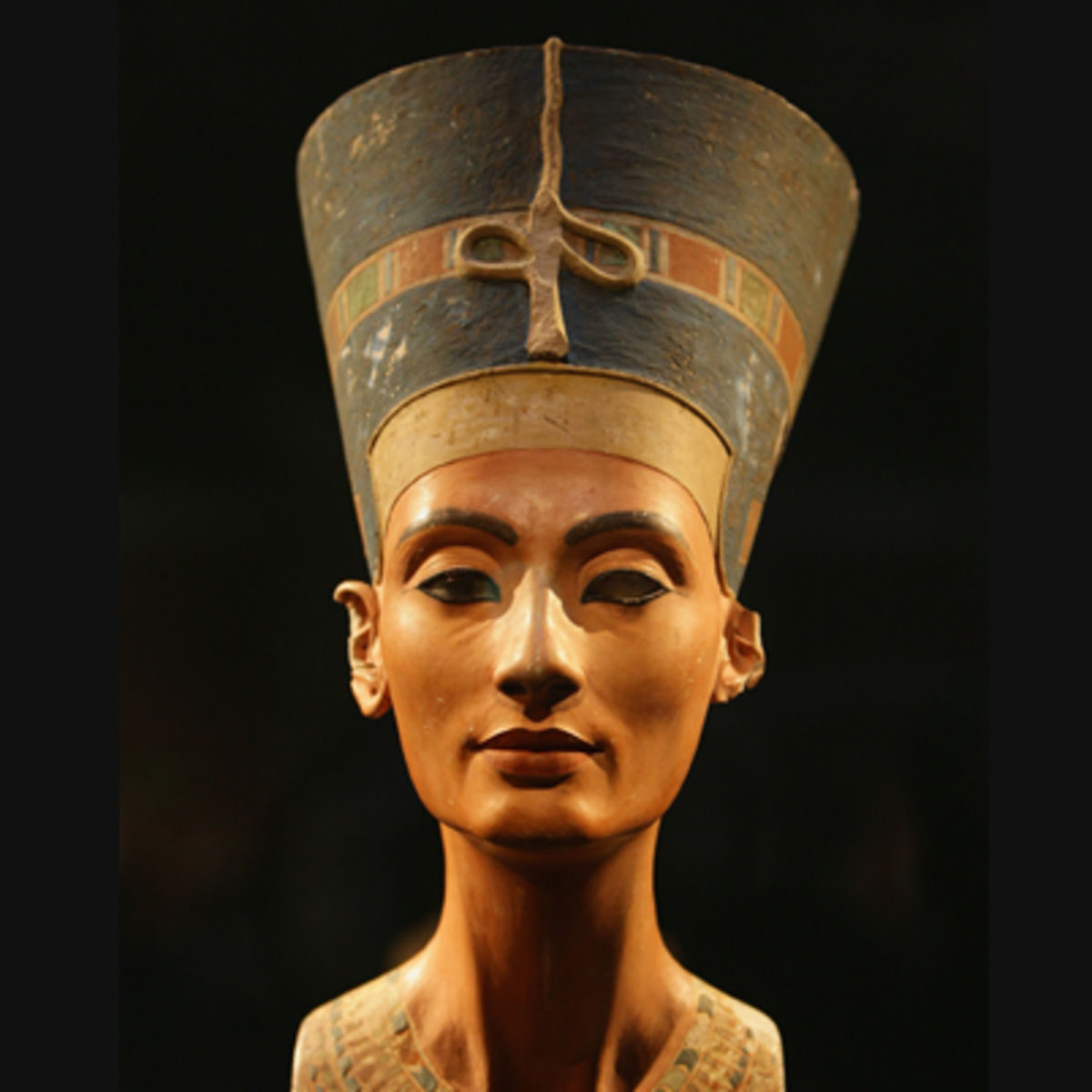Nefertiti
This image has to be one of the most iconic to have survived from Ancient Kemet. Nefertiti was the Great Royal Wife of Akhenaten. The Ancient Kemites didn’t actually have a word for ‘queen’, instead royal women took titles that described their position in the royal house. Both principal members of this royal family changed their names. Akhenaten, who ruled from 1352-1334 BCE changed his name from Amenhotep in the fifth year of his reign. Nefertiti, which means the Beautiful One is Here adopted the name Nefernefruaten, which translates as: Perfect One of Aten’s Perfection. The Aten being the divine sun disk, which was worshipped through the royal couple. It can been seen on the relief below, with rays that terminate in hands cascading down on the royal family.
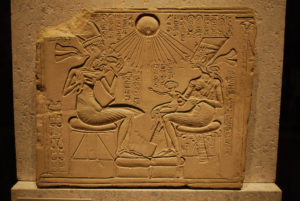
Presenting Nefernefruaten Nefertiti
In her initial portraits Nefertiti adopted the same features as her husband, but can be distinguished from him by wearing two cobras on her brow (a double uranus) as opposed to one. This portrait type is best illustrated by the colossal statues from Karnak (see below). However, in time a new portrait type emerged.
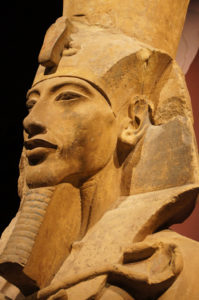
There are still many questions remaining with regard to how long Nefertiti ruled for and whether she was replaced by her daughter as the principal Royal Wife. As a consequence, where statues were uninscribed it can be difficult to say with any certainty which royal female they represent. This problem is compounded by new artistic developments in the production of stone sculptures, whereby artists began to produce composite pieces; carved out of different pieces of stone rather than a single block. The identification of the statue below is questionable. It is clearly from the so-called Amarna period and it could represent Nefertiti. Or it may represent one of the other royal daughters.
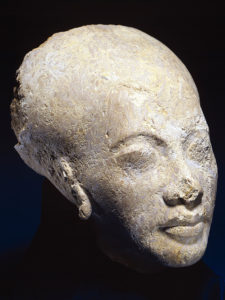
You will notice the elongated head, which was characteristic of the early royal representations during this period. A natural comparison with the practice of head binding amongst for example the Mangbetu people is often made. However, I would urge caution because we cannot show a direct continuum from one culture to the other. What we can deduce is that this feature was an important enough to include in the early representations of this Kemite royal family.
The portrait
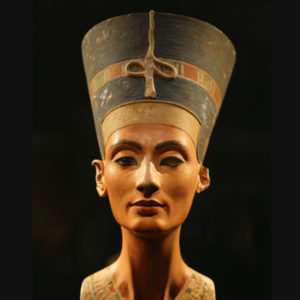
The famous portrait of Nefertiti depicts a more mature woman, wearing an unusual crown that became synonymous with her and which is found on other representations of the royal wife. It was found in the workshop of an artist named Thutmose at the royal city of Akhetaten. This city was the capital of Kemet during the reign of Akhenaten, but was later abandoned by King Tutankhamen.
The sculpture is 48 cm high and is made from limestone covered in layers of plaster and was then painted. The sculpture was, however, unfinished. A striking feature of the piece is that only one inlay for the eye is present. No adhesive has been found in the second socket, suggesting that this is how the sculpture was left by the artist Thutmose. It has been suggested, therefore, that it was in fact a sculptor’s model rather than a representation that would be used as a finished piece.
We don’t have sculptors’ models for all periods of Kemet’s history; although this is possibly due to lack of survival of artist workshops. The two periods where we have examples of such models are during the reign of Akhenaten, and then much later during the reigns of the early Ptolemaic rulers in the third century BCE.
Another unfinished piece representing Nefertiti that was also found in Thutmose’s workshop shows the artist’s guidelines on the surface (below). The features on this particular piece are a cross between the Cambridge statue (above) and the famous bust.
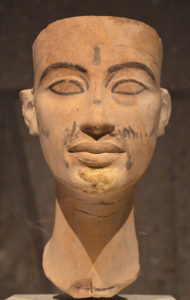
Such sculptures enable us to understand the complexities of defining and disseminating the royal image. They explain how, in such an expansive country, the King and his consort were able to control how they were represented. And they are also testimony to the skills of the artists of Kemet. As an archaeologist, I generally refrain from viewing material culture as ‘art’. However, there can be no doubt that not only is the famous portrait of Nefertiti part of an important artistic process, and the product of a master artist of the time, but it is also an artistic masterpiece that rivals anything that has since been produced.

